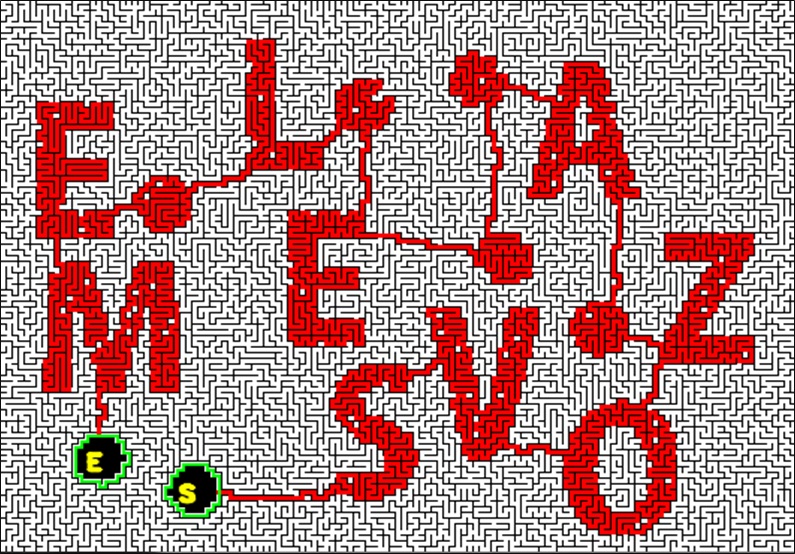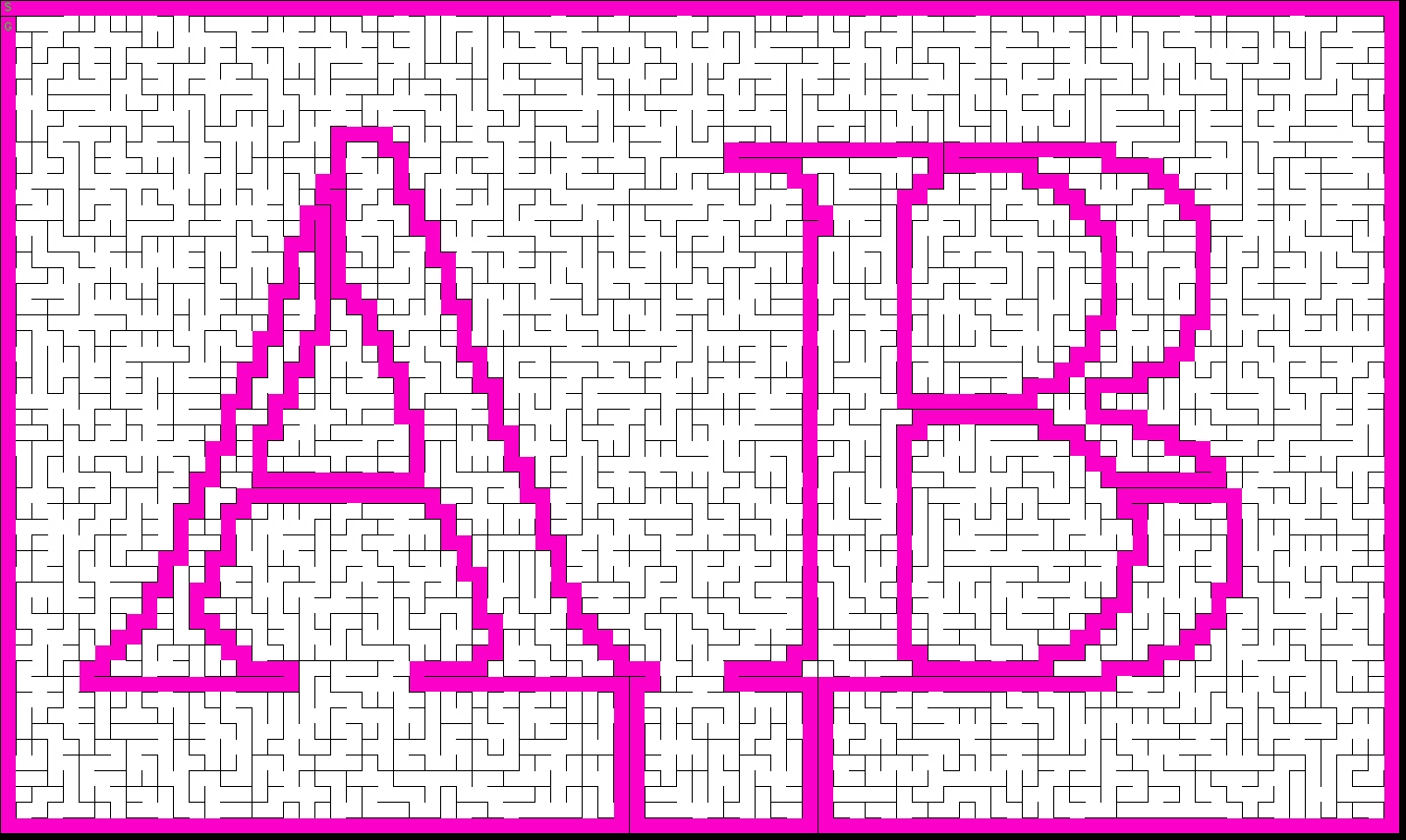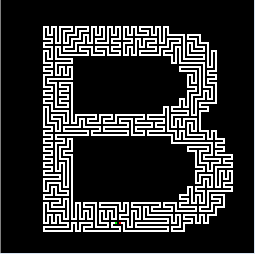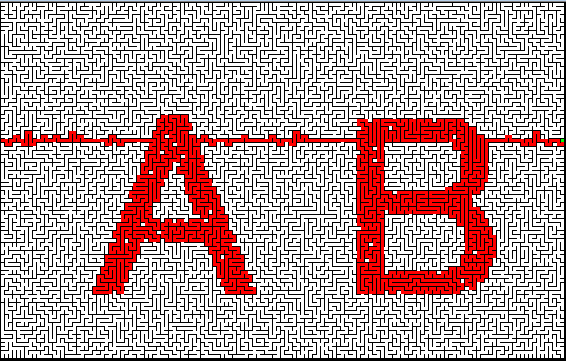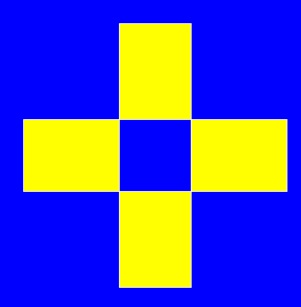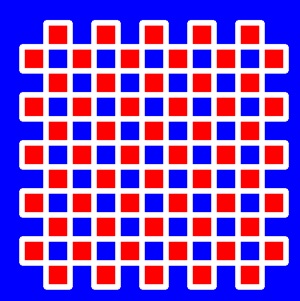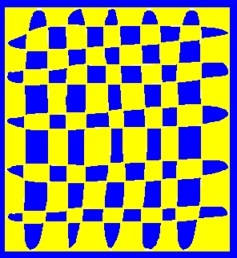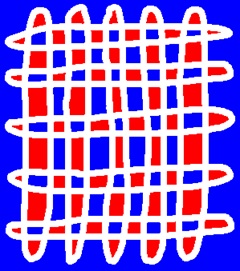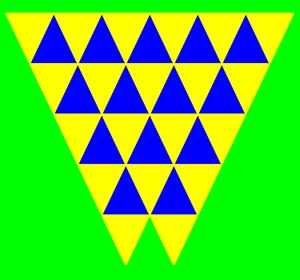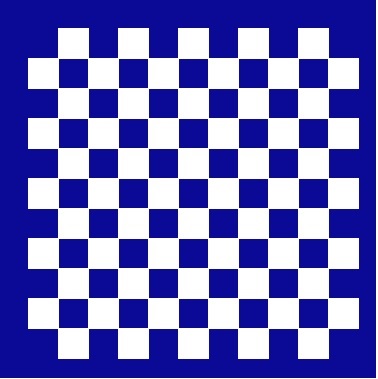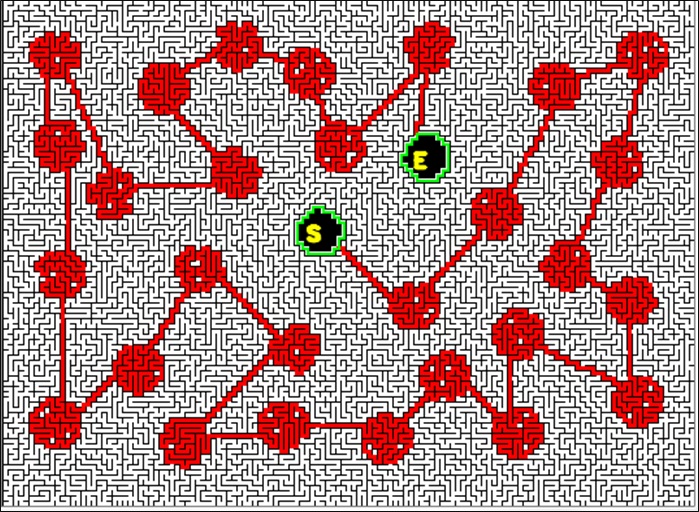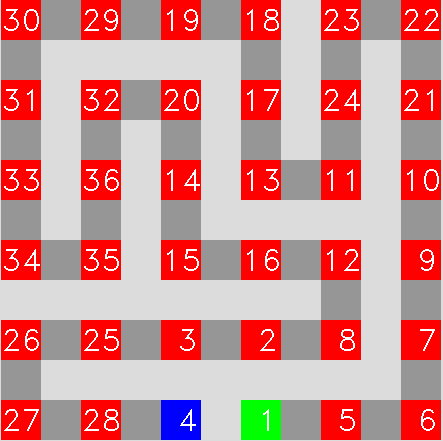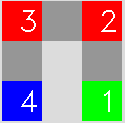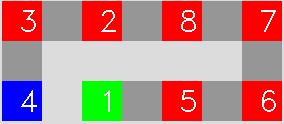| 1 |
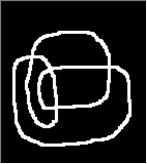
|
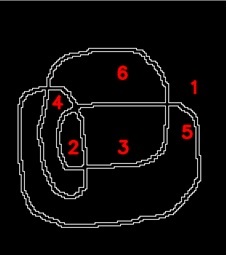
|
The left side of these two left pictures is the one stroke closed curve with line width of 3 pixels, rather wide. .
The right picture is the contours of the curve extracted; all the contours are cycles and numbered, 1 to 6.
Every part of the original curve is covered by two cycle lines.
If the curve of the original curve is narrow, one pixel or less, the double contour cycles are expected to overlap.
If we consider the intersection of the curve as a vertex and the curve between two vertices as an edge of a graph,
the closed curve can be considered as a graph with every vertex of even degree. Therefore, the graph is Eulerian.
The overlapped cycles occupy the same vertices and the edges and organize two Eulerian circuits.
However, the path routes of the two are different.
Considering the region surrounded by the original curve as a vertex and the adjacency between the two vertices as an edge, we have a graph,
which is known to be a bipartite graph. By the same way,
consider the region surrounded by a cycle as a vertex and the adjacency between two cycles as an edge, we have a graph.
We name the graph as the region cycle graph. By analogy, this graph should be a bipartite graph.
So it is possible to separate the cycles into two sets, partition X and partition Y.
This means that every point on the original curve has the corresponding point on each of the cycle sets.
This enables the construction of the two Eulerian circuits.
|
| 2 |
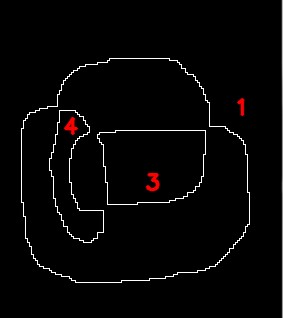
|
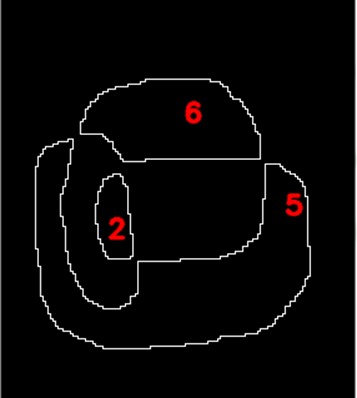
|
The figures on the left are the two partitions of cycle sets
|
| 3 |
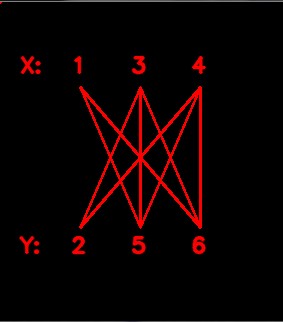
|
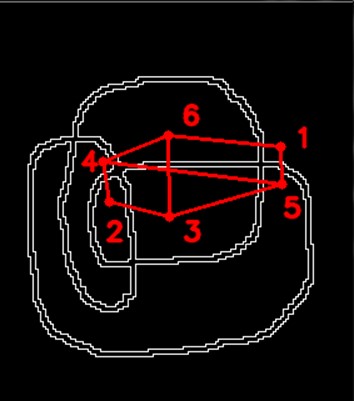
|
The left of the left is the bipartite graph of the cycles extracted.
The right of the left is the region cycle graph, a bipartite graph, previously explained.
|
| 4 |
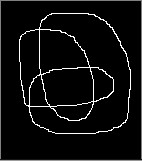
|
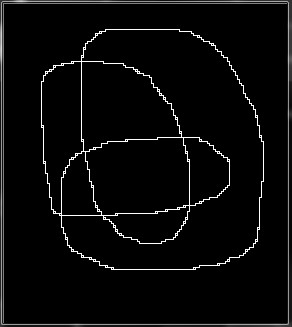
|
The left of the left is the one stroke closed drawing with line width of one pixel.
The right of the above is the contours extracted from the picture.
Every part of the curve is covered by the double contour cycles like the previous case with 3 pixel line width.
However, the contours look like single lines. This is because those contour lines overlap at most of the original curve.
|
| 5 |
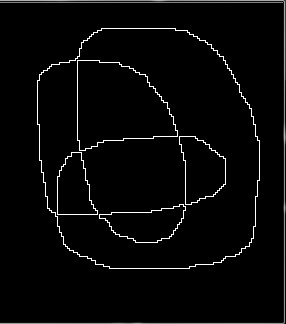
|
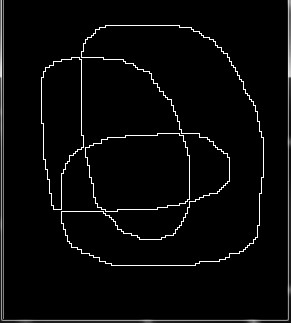
|
The same procedure of the bi-partitioning was applied the contour cycles of one pixel width.
The results are the cycles shown on the left two figures. Both look alike.
However, they are different cycle sets.
One is composed of the five cycles and the other three cycles.
This is more persuasive to say that the contours of a one stroke closed curve constitute two Eulerian circuits.
|
| 6 |
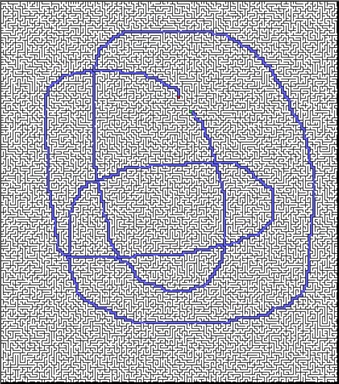
|
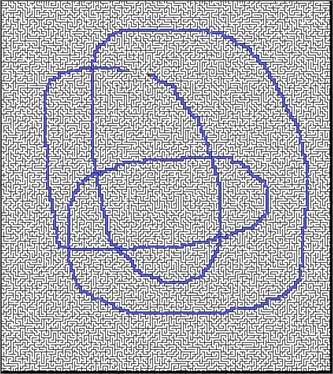
|
Each of the previous partitions of X and Y was merged into one single cycles.
A part of the route was cut to designate the ends as the start and the goal of the maze path.
Adding some random dead end branches and thinning the walls complete the mazes, which are shown on the left.
Both, X and Y, look alike but have different path routes.
|
| 7 |
Refer to the paper below for the details.
Tomio Kurokawa, "Maze Construction by Using Characteristics of Eulerian Graphs,"
British Journal of Mathematics & Computer Science, Vol.9, Issue.6, pp.453-472, 2015.6,
SCIENCEDOMAIN international, UK, ISSN: 2231-0851, http://sciencedomain.org/issue/1147
Paper Down Load-DOI:https://doi.org/10.9734/BJMCS/2015/18125
|

